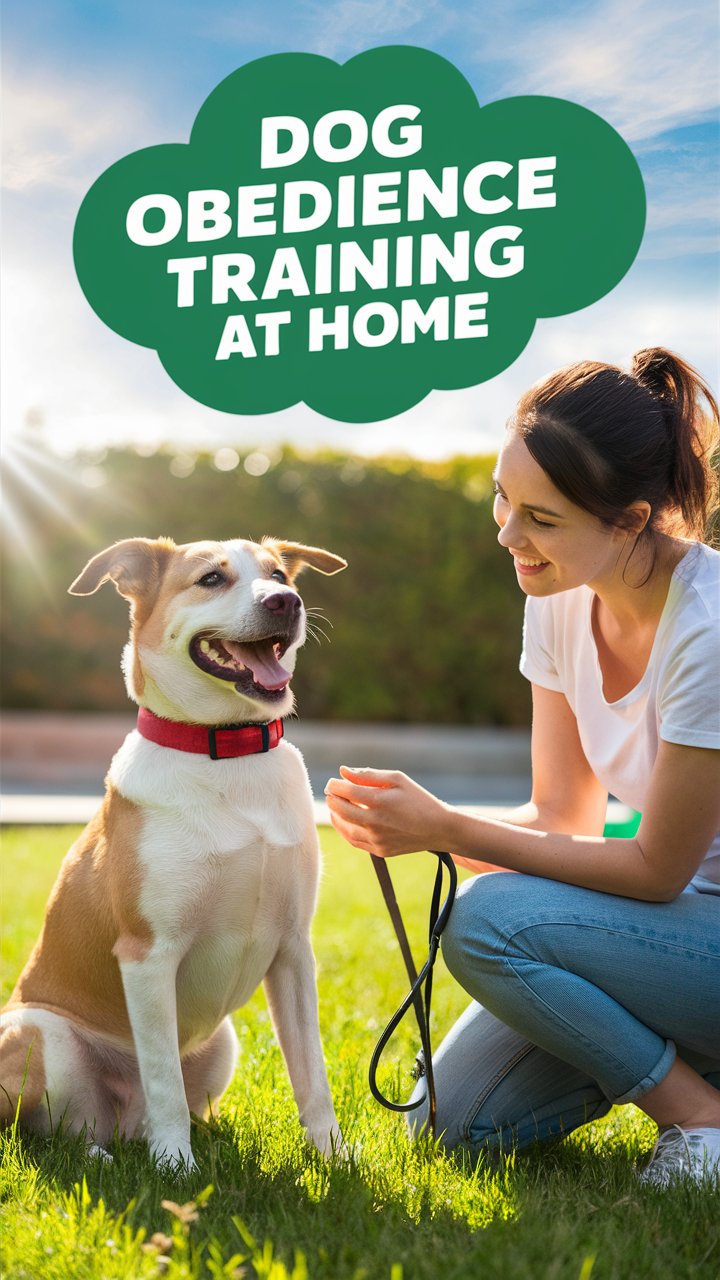Training your dog at home is one of the most rewarding experiences you can have as a pet parent. Unlike obedience schools, home training gives you control over the environment, minimizes distractions, and helps your pup feel more comfortable. The result? A dog who listens to you everywhere—not just in front of a trainer.
But here’s the deal: dog obedience training at home requires consistency, patience, and the right techniques. In this guide, you’ll learn step-by-step methods, advanced training hacks, and solutions to common challenges so your dog becomes the well-mannered companion you’ve always dreamed of.
🏡 Why Train Your Dog at Home?
- Comfort Zone Advantage: Dogs learn faster in familiar surroundings.
- Custom Routine: You decide the training schedule and pace.
- Money-Saving: Skip costly trainers and build a stronger bond yourself.
- Consistency Matters: Your dog learns to follow your commands, not just a stranger’s.
📌 The Golden Rules of Home Dog Training
Before we jump into techniques, remember these essentials:
- Positive Reinforcement Only → Reward good behavior with treats, toys, or praise.
- Short, Fun Sessions → 10–15 minutes is ideal; multiple times a day works best.
- Consistency is Key → Use the same commands, gestures, and timing every time.
- Patience Over Perfection → Progress may be slow at first—don’t give up.
🐾 Step-by-Step Obedience Training Techniques
1. Lure-and-Reward Method (Beginner-Friendly)
- Use a treat to guide your dog into the position (sit, down, etc.).
- Reward immediately when they get it right.
- Works great for puppies and first-time learners.
2. Clicker Training for Precision
- Use a clicker to “mark” correct behavior the instant it happens.
- Follow every click with a reward.
- Dogs associate the click with success faster than with verbal praise.
3. Leash Training at Home
- Attach the leash indoors and walk short distances.
- Stop walking when your dog pulls—resume only when they stop.
- This teaches them that pulling = no progress, calm walking = forward movement.
4. Impulse Control (Self-Discipline Training)
- Make your dog wait calmly before meals, toys, or walks.
- Use commands like “wait” and reward patience.
- Builds discipline and reduces hyperactive behavior.
5. Boundary Training
- Teach your dog not to enter certain rooms or cross doors without permission.
- Use a leash and clear “stop” or “back” command.
- Essential for safety (e.g., keeping them from running out the door).
6. Recall Mastery (“Come” Command)
- Start in a quiet room, squat down, and call your dog cheerfully.
- Reward them big when they respond.
- Gradually increase distance and distractions.
- Pro tip: Never punish your dog when they finally come, even if delayed.
7. Distraction-Proof Training
- Once your dog learns commands indoors, add distractions: TV sounds, kids playing, or the backyard.
- Gradually train in busier environments (parks, walks).
- This ensures reliability in real-life situations.
8. Crate Training (For Obedience + Safety)
- A crate isn’t punishment—it’s your dog’s safe space.
- Teach them to enter calmly and wait before exiting.
- Helps with potty training, travel, and reducing anxiety.
🚫 Common Training Mistakes (Weak Points to Avoid)
- ❌ Inconsistent Commands → Using “down” one day and “lie down” the next confuses your pup.
- ❌ Overusing Treats → Dogs may obey only for food. Mix in praise and playtime.
- ❌ Punishment-Based Training → Yelling or hitting builds fear, not obedience.
- ❌ Training Too Long → Dogs lose focus quickly; shorter is better.
- ❌ Reinforcing Bad Habits → Giving attention when your dog jumps up teaches them to keep doing it.
❓ FAQs About Dog Obedience Training at Home
Q: What’s the best age to start training?
A: Puppies can start as early as 8 weeks, but older dogs can learn too—it just takes patience.
Q: How long until I see results?
A: Some dogs respond in days, others in weeks. Consistency matters more than speed.
Q: Can I train without treats?
A: Yes! Use toys, praise, or play as rewards. Food is just the easiest starter.
Q: What if my dog is aggressive or stubborn?
A: Start with calm environments, use high-value rewards, and consider professional help for serious aggression.
🎯 Final Thoughts: Train Smart, Bond Stronger
Training your dog at home isn’t just about teaching commands—it’s about creating trust, discipline, and a lifelong bond. With patience, structure, and positive reinforcement, any dog can become obedient and well-behaved.
👉 Start small today: pick one command (like “sit”) and practice for 10 minutes. You’ll be amazed at how quickly progress happens when you’re consistent.
And remember, obedience training isn’t just for your dog—it makes your life as an owner easier and way more fun. 🐾
